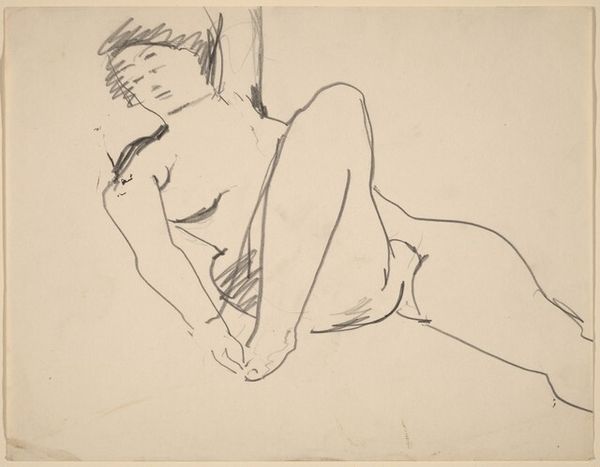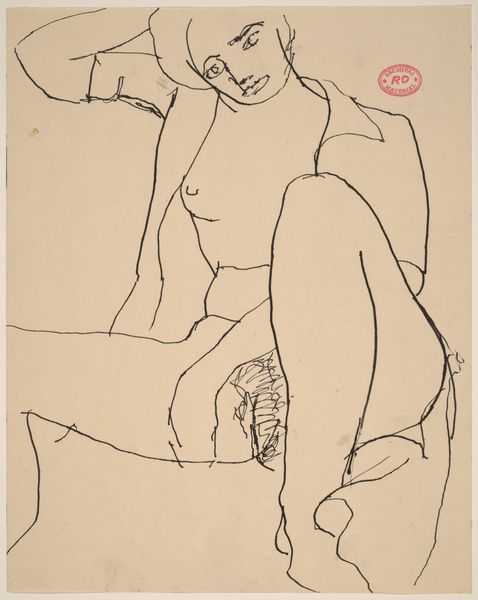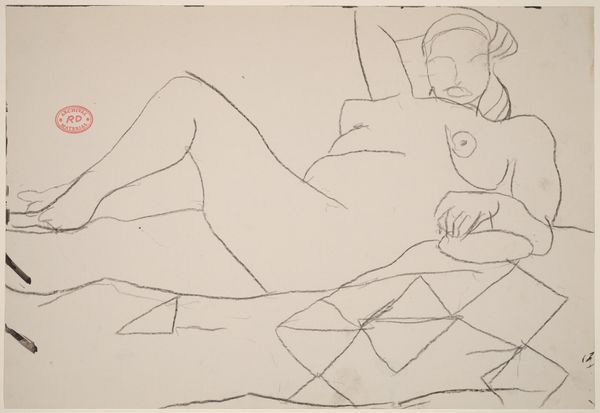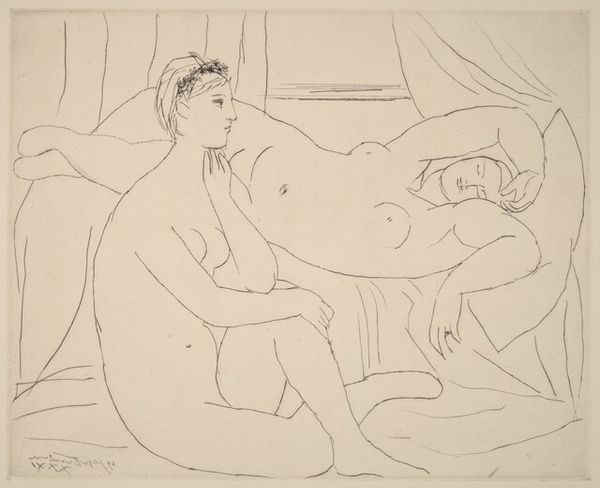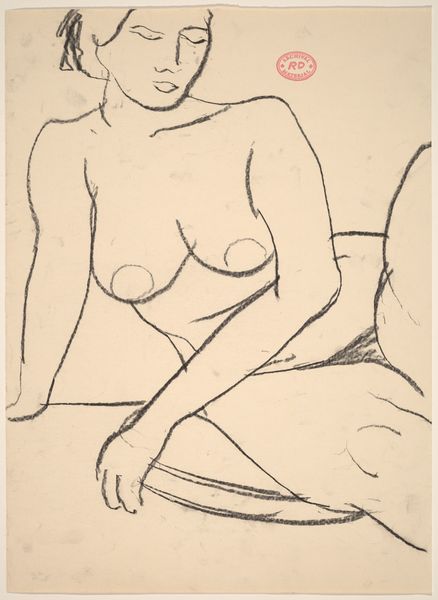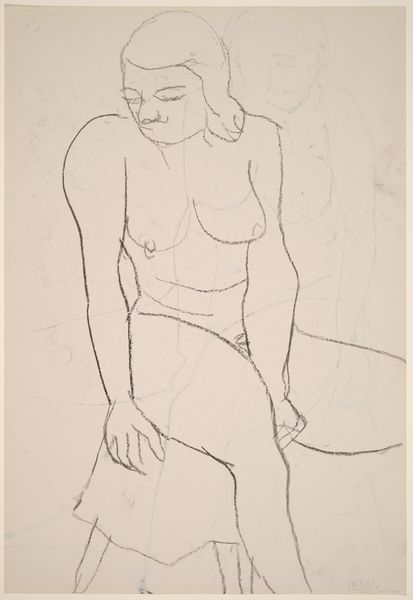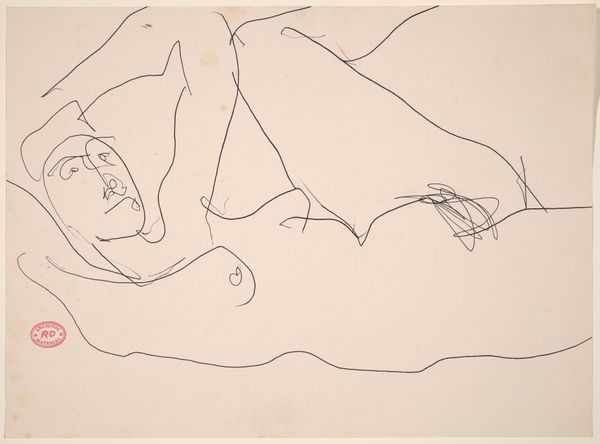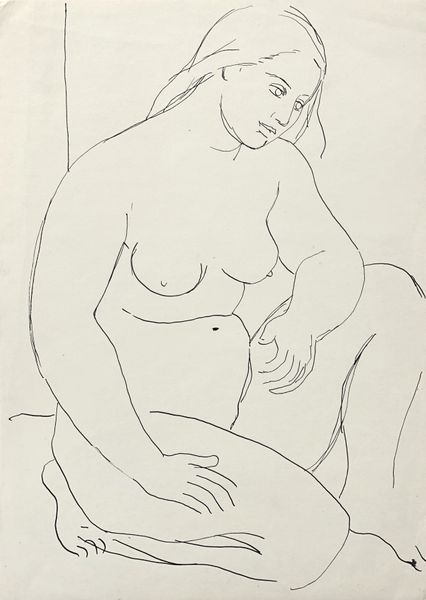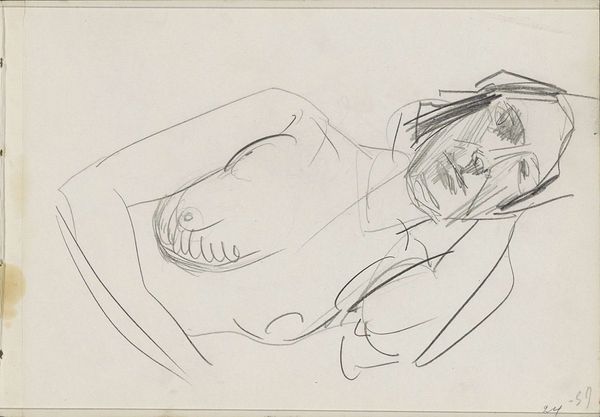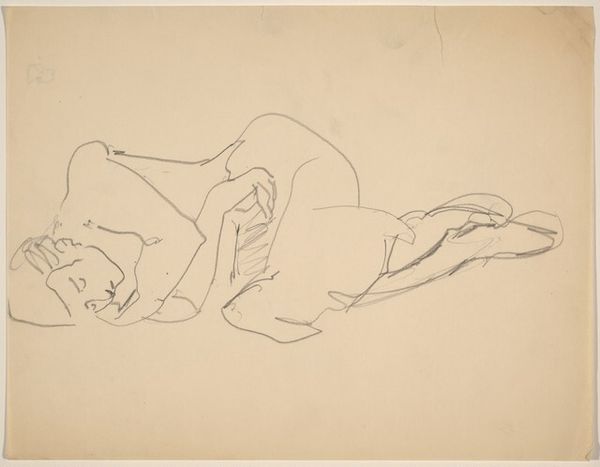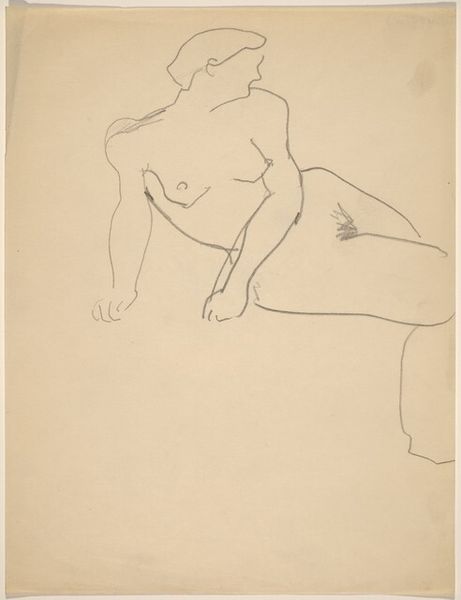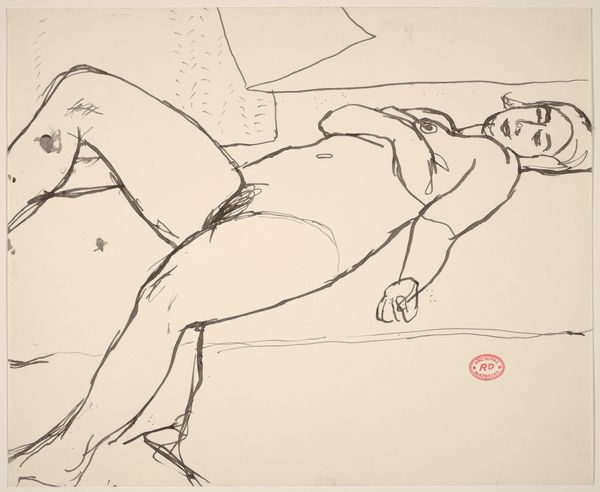
drawing
#
portrait
#
drawing
#
figuration
#
nude
#
modernism
Dimensions: overall: 25 x 32.9 cm (9 13/16 x 12 15/16 in.)
Copyright: National Gallery of Art: CC0 1.0
Editor: Here we have Henri Matisse's "Reclining Nude," created in 1935, a delicate drawing in what seems to be graphite or pencil. It has an intimate, almost casual feel. What strikes you when you look at it? Curator: The seeming simplicity is deceptive. Look closely at the line quality – its varying pressure, the tentative searching marks. This isn't just a portrait; it's a record of Matisse’s process. He's using readily available, inexpensive materials. It asks: what constitutes 'high' art when the tools are so ordinary? The paper, the pencil - mass produced objects that are accessible to anyone. Where is the value actually derived? Editor: So, you're saying that the materials challenge our conventional ideas? Curator: Precisely. Think about the context. The 1930s. Mass production is booming. This drawing, seemingly simple, speaks to a larger conversation about art's relationship to industry and labor. The marks on the page aren't just descriptive, but evidence of a physical process, almost performative in a way. Editor: That’s interesting, because I didn't really consider the material and how available it might have been. I was focused on the figure and the pose itself. Curator: And that's valid! But consider how Matisse subverts expectations of traditional portraiture through these material choices. It compels us to think about who has access to art, who makes art, and what constitutes artistic skill, moving it away from purely aesthetic value. Editor: That really changes how I see it. Now I’m thinking about the labor, the studio, the mass-produced materials… Curator: Exactly! The focus shifts from the idealized image to the concrete conditions of its creation, encouraging us to consider not just what we see, but how it was made, by whom, and under what circumstances. Editor: Thanks, that was very insightful. I'll definitely be paying closer attention to materials in other artworks from now on. Curator: Excellent. Hopefully you’ll be bringing that lens with you from now on.
Comments
No comments
Be the first to comment and join the conversation on the ultimate creative platform.
